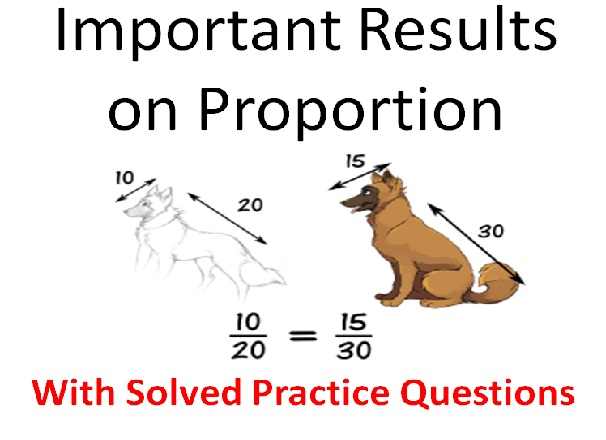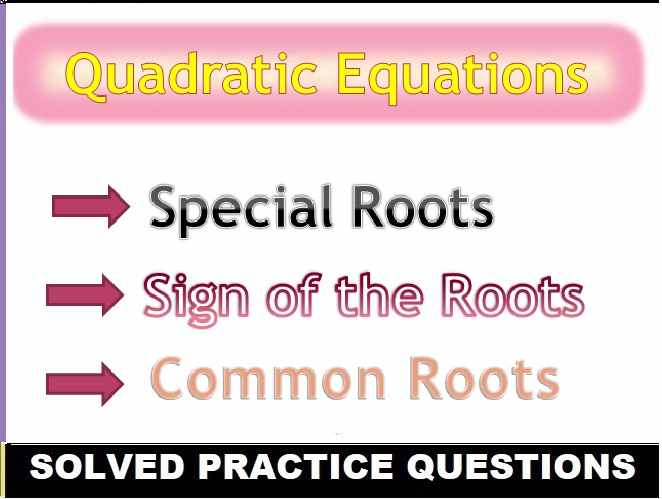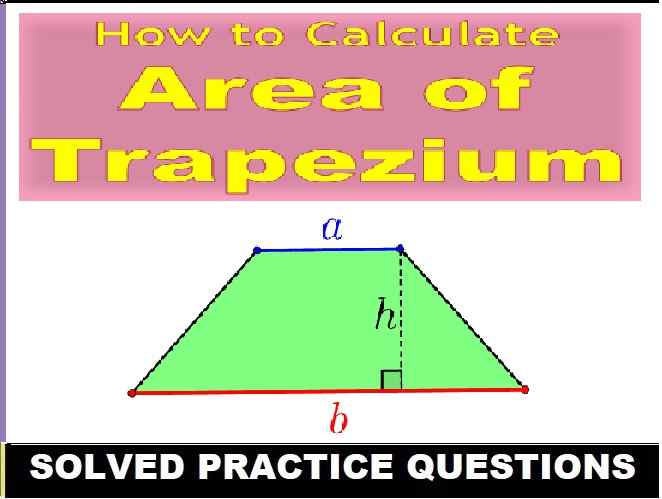Ratio and Proportion Class 10 OP Malhotra Exe-6B ICSE Maths Solutions of Ch-6 questions as latest prescribe guideline for upcoming exam. Visit official Website CISCE for detail information about ICSE Board Class-10 Mathematics.

Ratio and Proportion Class 10 OP Malhotra Exe-6B ICSE Maths Solutions of Ch-6
| Board | ICSE |
| Publications | S Chand |
| Subject | Maths |
| Class | 10th |
| Chapter-6 | Ratio and Proportion |
| Writer | OP Malhotra |
| Exe-6B | Important Result on Proportion |
| Edition | 2024-2025 |
Important Result on Proportion
The following are the important properties on proportion
- Dividendo – If a : b = c : d, then a – b : b = c – d : d
- Componendo – If a : b = c : d, then a + b : b = c+d : d
- Alternendo – If a : b = c : d, then a : c = b: d
- Invertendo – If a : b = c : d, then b : a = d : c
- Componendo and dividendo – If a : b = c : d, then a + b : a – b = c + d : c – d
Exercise- 6B
Ratio and Proportion Class 10 OP Malhotra ICSE Maths Solutions of Ch-6
Que-1: If x/y = p/q, prove that (5x + 7y)/(5x – 7y) = (5p + 7q)/(5p – 7q).
Sol: If, x/y = p/q
5x/7y and 5p/7q [Multiply by 5/7]
By using Componendo and Dividendo
i.e., 5x+7y/5x-7y = 5p+7q/5p-7q
Que-2: If (4a + 9b) : (4a – 9b) = (4c + 9d) : (4c – 9d), then show that a : b :: c : d.
Sol: Given, (4a+9b)/(4a-9b) = (4c+9d)/(4c-9d)
Applying componendo and dividendo,
(4a+9b+4a-9b)/(4a+9b-4a+9b) = (4c+9d+4c-9d)/(4c+9d-4c+9d)
8a/18b = 8c/18d
a/b = c/d.
Que-3: If (5a + 11b):(5c – 11d) :: (5a – 11b):(5c + 11d), then prove that a/b = c/d.
Sol: Given : (5a + 11b)/(5c – 11d) = (5a – 11b)/(5c + 11d)
By Applying Alternendo
(5a + 11b)/(5a – 11b) = (5c + 11d)/(5c – 11d)
By Applying Componendo and Dividendo
(5a+11b+5a-11b)/(5a+11b-5a+11b) = (5c+11d+5c-11d)/(5c+11d-5c+11d)
10a/22b = 10c/22d
a/b = c/d.
Que-4: Show that a, b, c, d are in proportion if
(i) (ma2 + nb2) : (mc2 + nd2) :: (ma2 – nb2) : (mc2 – nd2)
(ii) (a + b + c + d)(a – b – c + d) = (a + b – c – d)(a – b + c – d)
Sol: (i) (ma² + nb²)/(mc² + nd²) = (ma² – nb²)/ ( mc² – nd²)
Let us assume that a,b,c,d are in proportion, so
a/b = c/d
Squaring on both sides
a²/b² = c²/d²
Multiplying both sides by m/n
ma²/nb² = mc²/ nd²
By applying componendo and dividendo
(ma² + nb²)/ (ma² – nb²) = (mc² + nd²) / ( mc² – nd²)
By applying alternendo
(ma² + nb²)/(mc² + nd²) = (ma² – nb²)/ ( mc² – nd²)
So, we have arrived at this equation and it is given that this is true so, it can be concluded that our assumption was true.
Hence, a,b,c,d are in proportion.
(ii) Let:
A = a+b+c+d
B = a−b−c+d
C = a+b−c−d
D = a−b+c−d
A/B = C/D
By using componendo and dividendo
(A+B)/(A-B) = (C+D)/(C-D)
Now, putting the values,
[(a+b+c+d)+(a−b−c+d)]/[(a+b+c+d)−(a−b−c+d)] = [(a+b−c−d)+(a−b+c−d)]/[(a+b−c−d)−(a−b+c−d)]
(2a+2d)/(2b+2c) = (2a-2d)/(2b-2c)
(a+d)/(b+c) = (a-d)/(b-c)
(a+d)(b−c) = (a−d)(b+c)
ab−ac+bd−cd = ab+ac−bd−cd
−2ac+2bd = 0
ac = bd
a/b = c/d.
Que-5: If a:b = c:d and e : f = g : h, then prove that (ae + bf) : (ae – bf) = (cg + dh) : (cg – dh).
Sol: Given, a/b = c/d —— (1)
e/f = g/h —– (2)
Multiplying both the equation (1) and (2)
ae/bf = cg/dh
By dividendo and componendo
(ae+bf)/(ae−bf) = (cg+dh)/(cg−dh)
Que-6: If x = 10pq/(p + q), then find the value of (x + 5p)/(x – 5p) + (x + 5q)/(x – 5q).
Sol: From given, we have,
x = 10pq/p+q
we need to find x+5p / x-5p + x+5q / x-5q
First, we need to substitute the value of x in given equation,
x+5p / x-5p + x+5q / x-5q
(10pq/p+q)+5p / (10pq/p+q)-5p + (10pq/p+q)+5q / (10pq/p+q)-5q
further solving we get,
[(10pq/p+q)+5p] / [(10pq/p+q)-5p] + [(10pq/p+q)+5q] / [(10pq/p+q)-5q]
[(p+3q)/(q-p)] + [(3p+q)/(p-q)]
[-(p+3q)/-(q-p)] + [(3p+q)/-(-q-p)]
[{-(p+3q)+3p+q}]/-(q-p)
-(2p-2q)/(q-p)
[-2(q-p)]/(q-p)
-(-2)
= 2.
Que-7: If x = 6pq/(p + q), then find the value of (x + 3p)/(x – 3p) + (x + 3q) / (x – 3q).
Sol: (x + 3p)/(x – 3p) + (x + 3q)/(x – 3q).
Put x = 6pq/(p + q)
[{6pq/(p + q)}+3p]/[{6pq/(p + q)}-3p] + [{6pq/(p + q)}+3q]/[{6pq/(p + q)}-3q]
[{6pq+3p(p+q)}/(p+q)]/[{6pq-3p(p+q)}/(p+q)] + [{6pq+3q(p+q)}/(p+q)]/[{6pq-3q(p+q)}/(p+q)]
[{6pq+3p²+3pq}/(p+q)]/[{6pq-3p²-3pq}/(p+q)] + [{6pq+3pq+3q²}/(p+q)]/[{6pq-3pq-3q²}/(p+q)]
{6pq+3p²+3pq}/{6pq-3p²-3pq} + {6pq+3pq+3q²}/{6pq-3pq-3q²}
(9pq+3p²)/(3pq-3q²) + (9pq+3q²)/(3pq-3q²)
[(3pq+p²)/(pq-p²)] + [(3pq+q²)/(pq-q²)]
[(3pq+p²)(pq-q²)+(3pq+q²)(pq-p²)]/[(pq-p²)(pq-q²)]
The numerator simplifies to :
(3p²q−3pq³+p²q−p²q²) + (3pq²−3p³q+pq²−p²q²)
6p²q+6pq²
So, the final expression becomes,
(6p²q+6pq²)/[(pq-p²)(pq-q²)]
The result simplifies to
= 2.
Que-8: Solve for x using the properties of proportion.
(i) (3x + √(9x2 – 5)) / (3x – √(9x2 – 5)) = 5
(ii) [√(x + 2) + √(x – 3)] / [√(x + 2) – √(x – 3)] = 5
(iii) (x3 + 3x) / (3x2 + 1) = 341 / 91
(iv) [√(x + 1) + √(x – 1)] / [√(x + 1) – √(x – 1)] = (4x – 1) / 2
Sol: (i) (3x + √(9x2 – 5))/(3x – √(9x2 – 5)) = 5
Applying componendo and dividendo,
[3x+√(9x²-5)+3x-√(9x²-5)]/[3x+√(9x²-5)-3x+√(9x²-5)] = (5+1)/(5-1)
6x/[2√(9x²-5)] = 6/4
3x/√(9x²-5) = 3/2
x/√(9x²-5) = 1/2
Squaring both sides,
x²/(9x²-5) = 1/4
4x²-9x² = -5
-5x² = -5
5x² = 5
x² = 1
x = 1
(ii) [√(x + 2) + √(x – 3)]/[√(x + 2) – √(x – 3)] = 5
[√(x + 2) + √(x – 3)] = 5 [√(x + 2) – √(x – 3)]
[√(x + 2) + √(x – 3)] = 5√(x + 2) – 5√(x – 3)
√(x + 2) – 5√(x + 2) = -√(x – 3 – 5√(x – 3)
-4√(x + 2) = -6√(x – 3)
2√(x + 2) = 3√(x – 3)
Squaring both sides to eliminate the square roots:
4(x+2) = 9(x-3)
4x+8 = 9x-27
9x-4x = 27+8
5x = 35
x = 7.
(iii) (x3 + 3x)/(3x2 + 1) = 341/91
Applying componendo and dividendo
(x³+3x+3x²+1)/(x³+3x-3x²-1) = (341+91)/(341-91)
⇒ (x³+3x²+3x+1)/(x³-3x²+3x-1) = 432/250 = 216/125
⇒ (x+1)³/(x-1)³ = 216/125 = (6/5)³
∴ (x+1)/(x-1) = 6/5
⇒ 6x – 6 = 5x + 5
⇒ 6x – 5x = 5 + 6
⇒ x = 11.
(iv) [√(x + 1) + √(x – 1)]/[√(x + 1) – √(x – 1)] = (4x – 1)/2
Applying componendo and dividendo,
[√(x+1)+√(x-1)+√(x+1)-√(x-1)]/[√(x+1)+√(x-1)-√(x+1)+√(x-1)] = (4x-1+2)/(4x-1-2)
[2√(x+1)]/[2√(x-1)] = (4x+1)/(4x-3)
Squaring both sides,
(x+1)/(x-1) = (16x²+1+8x)/(16x²+9-24x)
Applying componendo and dividendo,
(x+1+x-1)/(x+1-x+1) = [16x²+1+8x+16x²+9-24x]/[16x²+1+8x-16x²-9+24x]
2x/2 = (32x²+10-16x)/(32x-8)
x = (16x²+5-8x)/(16x-4)
16x2 – 4x = 16x2 + 5 – 8x
4x = 5
x = 5/4.
Que-9: Solve for x: 16[(a – x) / (a + x)]3 = (a + x) / (a – x)
Sol: x : 16[(a – x) / (a + x)]3 = (a + x) / (a – x)
⇒ (a+x)/(a-x) × (a+x)/(a-x)³ = 16
⇒ (a+x)/(a-x)⁴ = 16 = (±2)4
⇒ (a+x)/(a-x) = ±2
When (a+x)/(a-x) = 2/1
Applying componendo and dividendo,
(a+x+a-x)/(a+x-a+x) = (2+1)/(2-1)
⇒ 2a/2x = 3/1
⇒ a/x = 3/1
⇒ 3x = a
∴ x = 3/a
Que-10: Solve for x: (1 + x + x2) / (1 – x + x2) = 171(1 + x) / 172(1 – x), x ≠ 1, -1.
Sol: (1 + x + x2)/(1 – x + x2) = 171(1 + x)/172(1 – x)
Cross-multiplying the equation, we get:
(1 + x + x2).172(1 – x) = (1 – x + x2).171(1 + x)
Expanding both sides,
First, Left side = 172(1+x+x²)(1−x) = 172[(1−x)+x(1−x)+x²(1−x)]
= 172[1−x+x−x²+x²−x³] = 172(1−x³)
Now, Right side = 171(1−x+x²)(1+x) = 171[(1+x)+(−x+x²)(1+x)]
= 171[1+x−x+x²+x³] = 171(1+x³)
Now, we have,
172(1−x³) = 171(1+x³)
172−172x³ = 171+171x³
1172−171 = 171x³+172x³
1 = 343x³
x³ = 1/343
x³ = (1/7)³
x = 1/7
Que-11: If x = [√(a2 + b2) + √(a2 – b2)] / [√(a2 + b2) – √(a2 – b2)], then show that b2x2 – 2a2x + b2 = 0.
Sol: x/1 = [√(a2 + b2) + √(a2 – b2)] / [√(a2 + b2) – √(a2 – b2)]
Applying componendo and dividendo both sides, we have
(x+1)/(x-1) = [√(a2 + b2)+√(a2 – b2)+√(a2 + b2) -√(a2 – b2)]/[√(a2 + b2) +√(a2 – b2)-√(a2 + b2) +√(a2 – b2)]
⇒ (x+1)/(x-1) = [2√a²+b²]/[2√a²+b²]
⇒ (x+1)/(x-1) = (√a²+b²)/(√a²+b²)
Squaring both sides, we have
⇒ (x+1)²/(x-1)² = (a²+b²)/(a²-b²)
⇒ (x²+1+2x)/(x²+1-2x) = (a²+b²)/(a²-b²)
Applying componendo and dividendo both sides, we get
⇒ (x²+1+2x+x²+1-2x)/(x²+1+2x-x²-1+2x) = (a²+b²+a²-b²)/(a²+b²-a²+b²)
⇒ (2x²+2)/4x = (2a²)/(2b²)
⇒ (x²+1)/2x = a²/b²
b²(x²+1) = 2a²x
b²x²+b²-2a²x = 0.
Que-12: If y = [√(a + 3b) + √(a – 3b)] / [√(a + 3b) – √(a – 3b)], then show that 3by2 – 2ay + 3b = 0.
Sol: We have
y/1 = [√(a+3b)+√(a-3b)]/[√(a+3b)-√(a-3b)]
Applying componendo and dividendo
(y+1)/(y-1) = [√(a+3b)+√(a-3b)+√(a+3b)-√(a-3b)]/[√(a+3b)+√(a-3b)-√(a+3b)+√(a-3b)]
(y+1)/(y-1) = [2√(a+3b)]/[2√(a-3b)]
Squaring both side
(y+1)²/(y-1)² = (a+3b)/(a-3b)
⇒ (y²+1+2y)/(y²+1-2y = (a+3b)/(a-3b)
Again applying componendo and dividendo
⇒ (y²+1+2y+y²+1-2y)/(y²+1+2y-y²-1+2y) = (a+3b+a-3b)/(a+3b-a+3b)
⇒ [2(y²+1)]/4y = 2a/6b
⇒ 3by² + 3b = 2ay
⇒ 3by2 – 2ay + 3 = 0.
Hence proved.
Que-13: If (a3 + 3ab2) / (3a2b + b3) = (x3 + 3xy2) / (3x2y + y3), then show that x/a = y/b.
Sol: (a³ + 3ab²) / (3a²b + b³) = (x³ + 3xy²) / (3x²y + y³)
x/a = k , y/b = k
x = ka, y = kb
Substituting into the right-hand side:
[(ka)³+3(ka)(kb)²]/[3(ka)²(kb)+(kb)³]
[k³a³+3k³ab²]/[3k³a²b+k³b³]
[k³(a³+3ab²)]/[k³(3a²b+b³)]
(a³+3ab²)/(3a²b+b³)
Since the right-hand side simplifies to the left-hand side, the assumption x = ka and y = kb holds.
Thus, we have:
x/a = y/b
–: End of Ratio and Proportion Class 10 OP Malhotra Exe-6B ICSE Maths Solutions of Ch-6 :–
Return to : OP Malhotra S Chand Solutions for ICSE Class-10 Maths
Thanks
Please Share with Your Friends


